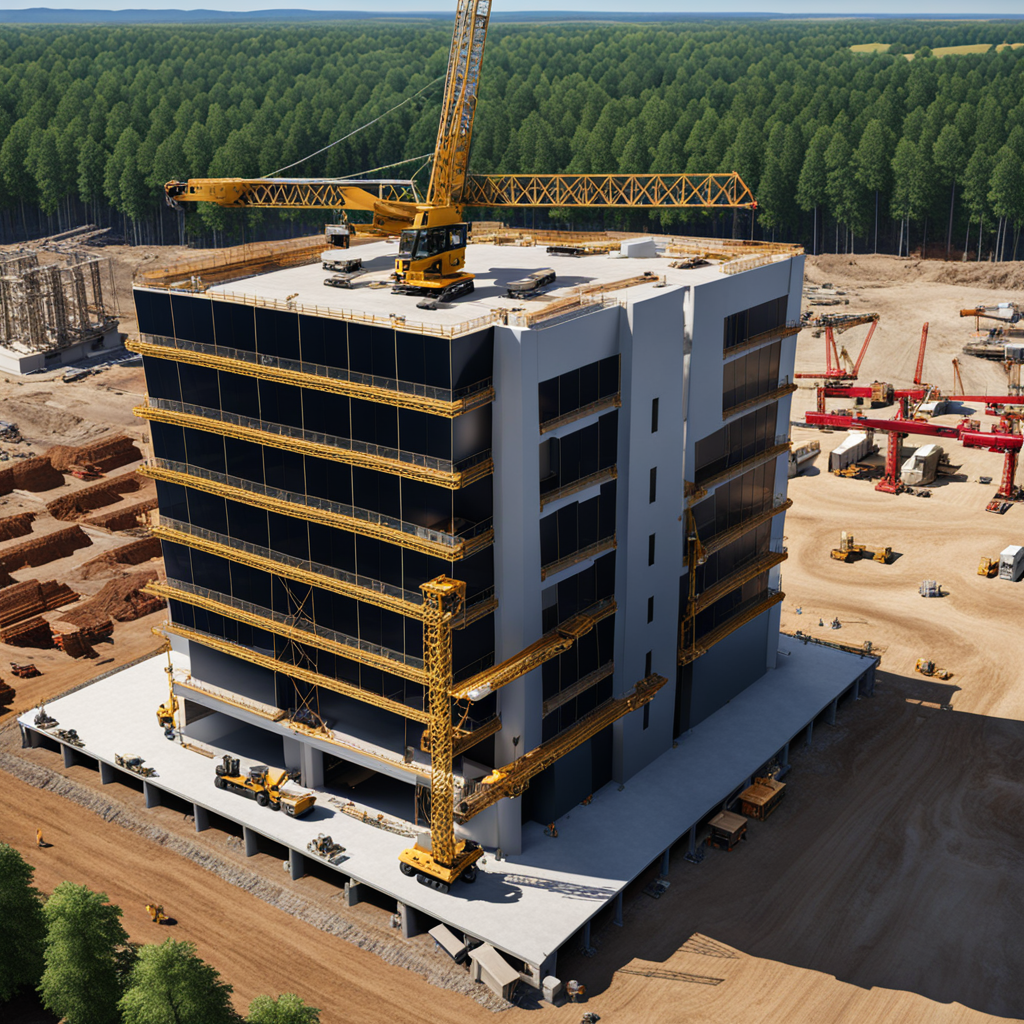Commercial buildings are complex projects that require meticulous planning, execution, and maintenance. Achieving success in commercial building projects involves a deep understanding of various factors, including energy efficiency, construction materials, design and layout, and maintenance strategies. This article delves into insider tips across these domains, offering valuable insights for anyone involved in commercial building projects.
Energy Efficiency
Energy efficiency is not just an environmental concern; it's also a financial one. Commercial buildings consume a significant amount of energy, primarily through lighting, heating, ventilation, and air conditioning (HVAC) systems. Here are some insider tips for enhancing energy efficiency:
Lighting Upgrades: Lighting accounts for 17% of all electricity consumed by commercial buildings. Transitioning to LED lighting can reduce energy consumption by up to 90% compared to traditional lighting solutions. Moreover, smart lighting systems with timers or motion sensors can prevent unnecessary energy use, ensuring lights are only on when needed.
HVAC Maintenance: HVAC systems are responsible for a substantial portion of energy use in commercial buildings, accounting for around 40% of electricity used. Regular maintenance of these systems is crucial for optimal performance and energy efficiency. This includes cleaning and replacing air filters, inspecting and repairing ductwork, calibrating thermostats, and conducting routine system checks.
Proper Insulation: Ensuring that a building is properly insulated can save up to 10% on energy bills. Insulation helps minimize heat transfer, maintaining desired temperatures with less reliance on heating and cooling systems. Don’t overlook areas like roofs, HVAC ducts, and electrical outlets.
Construction Materials and Techniques
The choice of construction materials and techniques significantly impacts the sustainability, durability, and aesthetic appeal of commercial buildings. Here are some best practices:
Sustainable Materials: Opt for materials that are durable, recyclable, and have a low environmental impact. Bamboo and mass timber are excellent examples of sustainable materials that are gaining popularity in the construction industry.
In the realm of commercial building, achieving energy efficiency is not just a trend but a necessity. The drive towards sustainability has led to the adoption of innovative materials and construction techniques that significantly reduce a building's carbon footprint while enhancing its energy efficiency. This section delves deeper into sustainable materials and innovative techniques, drawing insights from recent advancements and successful case studies.
The choice of materials plays a pivotal role in the sustainability and energy efficiency of commercial buildings. Traditional materials like concrete, steel, and wood have been the backbone of construction for decades. However, the environmental impact of these materials, from production to disposal, has led to a search for greener alternatives.
Green Building Material Replacements: As highlighted by ProptechOS, sustainable materials such as bamboo, mass timber, and recycled content products offer a lower environmental footprint compared to traditional materials. These materials not only reduce the energy consumed during production but also enhance the energy efficiency of the buildings they are used in. For instance, mass timber has gained attention for its carbon sequestering capabilities and its ability to provide the same structural integrity as steel or concrete with a significantly lower environmental impact.
Case Studies of Success: The Bullitt Center in Seattle exemplifies the use of sustainable materials, featuring a wooden frame sourced from responsibly managed forests and a rooftop solar array that meets its energy needs year-round.
-Innovative Techniques: Embrace innovative construction techniques that can improve efficiency and reduce costs. For example, modular construction allows for parts of a building to be prefabricated off-site, reducing waste and speeding up construction times.
Beyond materials, the techniques employed in the construction process can greatly influence a building's energy efficiency. The industry has seen a shift towards methods that not only reduce the time and cost of construction but also minimize the environmental impact.
Passive Design: A cornerstone of energy-efficient construction, passive design leverages the building's orientation, insulation, and natural ventilation to minimize the reliance on artificial heating and cooling systems.
Renewable Energy Systems: The integration of renewable energy sources, such as solar panels and wind turbines, into commercial buildings is a direct route to reducing dependence on fossil fuels.
Building Automation Systems: Modern buildings are increasingly equipped with advanced automation systems that optimize energy use. These systems can control lighting, heating, ventilation, and air conditioning based on occupancy and other variables, significantly reducing energy waste
Technology Integration: Utilize technology to make informed decisions about materials and construction techniques. Software tools can help architects and engineers analyze the performance of different materials and design options, leading to better outcomes.
Design and Layout
The design and layout of a commercial building play a critical role in its functionality, aesthetics, and maintenance requirements. Here are some tips for success:
Open Spaces: Modern commercial buildings often feature open plan layouts, which promote collaboration and flexibility. These spaces can adapt to various uses and are generally easier and less costly to maintain.
Multi-Purpose Spaces: Designing spaces that can serve multiple purposes can maximize the utility of every square foot. This approach reduces wasted space and can lead to significant cost savings over time.
Natural Light: Maximizing natural light not only reduces the need for artificial lighting but also creates a more pleasant and productive environment for occupants. Consider the placement of windows and the orientation of the building to take full advantage of natural light.
Maintenance Strategies
Maintaining a commercial building is an ongoing challenge that requires strategic planning. Here are some insider tips for low-maintenance commercial properties:
Low-Maintenance Materials: Choose materials that are durable and easy to clean. For example, high-quality metal roofing can last decades with minimal maintenance, while certain types of flooring can withstand heavy traffic without frequent repairs.
Preventative Maintenance: Implement a regular maintenance schedule for all critical systems, especially HVAC. Preventative maintenance can identify and address potential issues before they become major problems, saving time and money in the long run.
Energy Audits: Conduct regular energy audits to identify areas where energy efficiency can be improved. This can involve upgrading insulation, sealing leaks, or updating lighting and HVAC systems to more energy-efficient models.
Conclusion
Success in commercial building projects requires a holistic approach that considers energy efficiency, construction materials, design and layout, and maintenance strategies. By implementing the insider tips outlined in this article, developers, architects, and building managers can create commercial buildings that are not only aesthetically pleasing and functional but also sustainable and cost-effective in the long run. The key is to stay informed about the latest trends and technologies in the industry and to prioritize decisions that add long-term value to the property.

